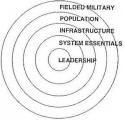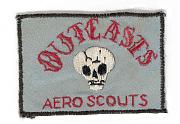Firearms categories
Firearms in Australia are grouped into Categories determined by the National Firearm Agreement with different levels of control. The categories are:
Category A: Rimfire rifles (not semi-automatic), shotguns (not pump-action or semi-automatic), air rifles, and paintball markers. A "Genuine Reason" must be provided for a Category A firearm.
Category B: Centrefire rifles (not semi-automatic), muzzleloading firearms made after 1 January 1901. Apart from a "Genuine Reason", a "Genuine Need" must be demonstrated, including why a Category A firearm would not be suitable.
Category C: Semi-automatic rimfire rifles holding 10 or fewer rounds and pump-action or semi-automatic shotguns holding 5 or fewer rounds. Category C firearms are strongly restricted: only primary producers, occupational shooters, collectors and some clay target shooters can own functional Category C firearms.
Category D: Semi-automatic centrefire rifles, pump-action or semi-automatic shotguns holding more than 5 rounds. Functional Category D firearms are restricted to government agencies and a few occupational shooters. Collectors may own deactivated Category D firearms.
Category H: Handguns including air pistols and deactivated handguns. (Albeit both SA and WA do not require deactivated handguns to be regarded as handguns after the deactivation process has taken place. This situation was the catalyst in QLD for the deactivation and diversion of thousands of handguns to the black-market – the loophole shut since 2001) This class is available to target shooters. To be eligible for a Category H firearm, a target shooter must serve a probationary period of six months using club handguns, and a minimum number of matches yearly to retain each category of handgun.
These categories – A,B,C,D and H were those determined by the NFA. The others listed here are determined by the states that have implement them at their own discretion.
Target shooters are limited to handguns of .38 or 9mm calibre or less and magazines may hold a maximum of 10 rounds. Participants in certain "approved" pistol competitions may acquire handguns up to .45", currently Single Action Shooting and Metallic Silhouette. IPSC shooting is approved for 9mm/.38/.357 handguns that meet the IPSC rules, but larger calibres are not approved for IPSC handgun shooting contests. Category H barrels must be at least 100mm (3.94") long for revolvers, and 120mm (4.72") for semi-automatic pistols unless the pistols are clearly ISSF target pistols: magazines are restricted to 10 rounds. Handguns held as part of a collection were exempted from these limits.
Category R/E: Restricted weapons: machine guns, rocket launchers, assault rifles, flame-throwers, anti-tank guns, Howitzers, artillery, etc. can be owned by collectors in some states provided that these weapons have been rendered permanently inoperable. They are subject to the same storage and licensing requirements as fully functioning firearms.
Certain Antique firearms can in some states be legally held without licences. In other states they are subject to the same requirements as modern firearms.
All single-shot muzzleloading firearms manufactured before 1 January 1901 are considered antique firearms. Four states require licences for antique percussion revolvers and cartridge repeating firearms, but in Queensland and Victoria a person may possess such a firearm without a licence, so long as the firearm is registered (percussion revolvers require a license in Victoria).








 ), as presently written, as being meant to apply only to semi-automatic actions (whatchacallits - what you call it). It could, of course, be easily amended to apply to bolt actions, pump actions and lever actions (whatchamacallits - what you may call it).
), as presently written, as being meant to apply only to semi-automatic actions (whatchacallits - what you call it). It could, of course, be easily amended to apply to bolt actions, pump actions and lever actions (whatchamacallits - what you may call it).  ). Probably, I shouldn't, but I do.
). Probably, I shouldn't, but I do.







Bookmarks